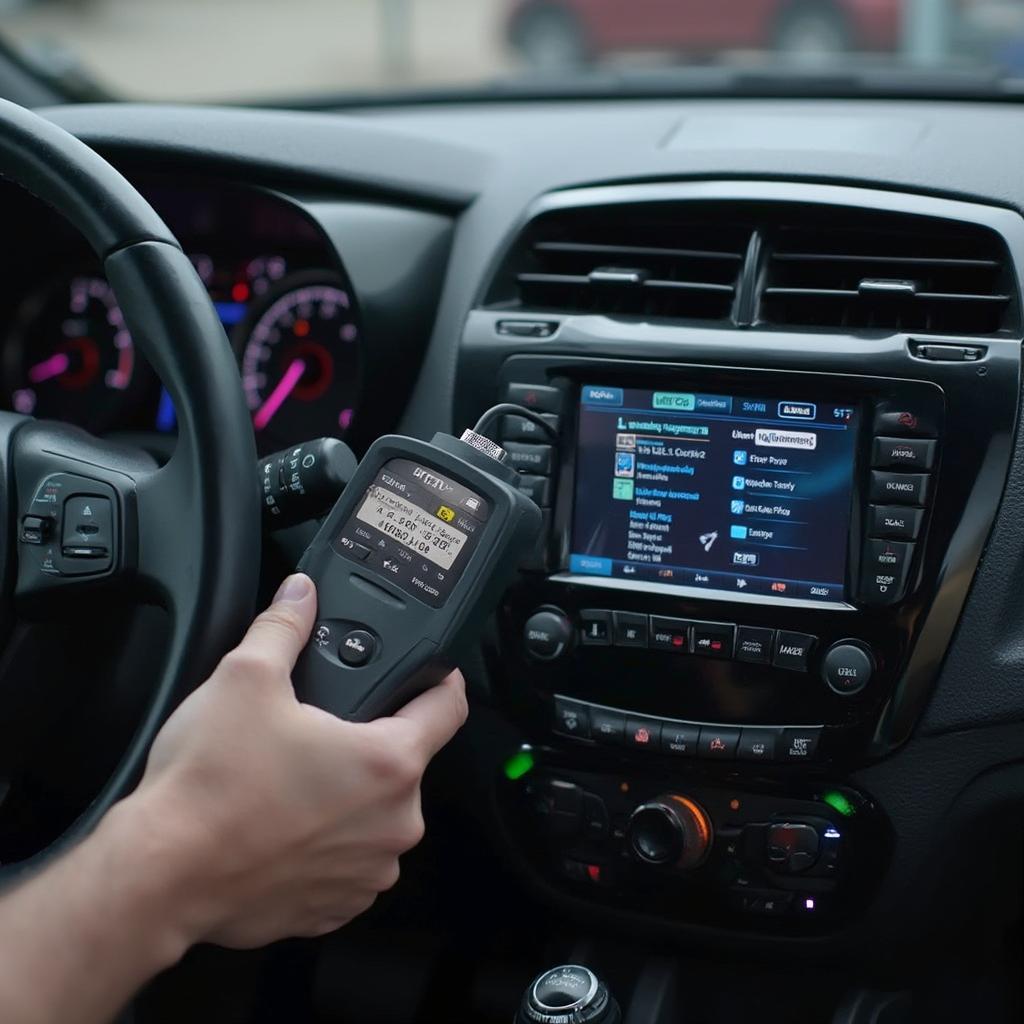OBD2, or On-Board Diagnostics II, has revolutionized how we diagnose and fix car problems. But when did this crucial technology become standard, particularly for General Motors (GM) vehicles? This article dives deep into the history of OBD2 and its implementation by GM, providing clarity on this frequently asked question. We’ll explore the regulations, the benefits, and answer some common questions related to GM and OBD2.
The OBD2 Mandate and GM’s Adoption
The 1990 Clean Air Act Amendments mandated OBD2 for all new cars sold in the United States, beginning in 1996 for model year 1996 vehicles. This meant that GM, along with all other automakers selling cars in the US, had to comply. Therefore, GM started incorporating OBD2 into its vehicles beginning with the 1996 model year. This standardization was a significant step towards cleaner air and more efficient vehicle maintenance. what year did honda start obd2 for comparison.
Why 1996? The Push for Cleaner Air
The 1990 Clean Air Act Amendments aimed to reduce vehicle emissions significantly. OBD2 played a vital role in achieving this goal by enabling more accurate and comprehensive diagnostics, leading to better emission control. Prior to OBD2, each manufacturer had its own diagnostic system, making it challenging for mechanics to troubleshoot issues across different car makes. The standardized system simplified diagnostics and improved repair efficiency.
Understanding the Benefits of OBD2 in GM Vehicles
OBD2 provides numerous benefits for GM vehicle owners. It allows for quick and accurate identification of problems, ranging from simple sensor malfunctions to complex engine issues. This early detection can prevent costly repairs down the line.
- Improved Emissions Control: By allowing for precise monitoring and control of the engine’s emissions systems, OBD2 helps GM vehicles meet stringent environmental standards.
- Enhanced Diagnostics: The standardized system enables mechanics to easily access diagnostic information, facilitating efficient and effective repairs.
- Early Problem Detection: OBD2 can detect issues early on, often before they cause noticeable symptoms, allowing for preventative maintenance and avoiding costly repairs.
- Increased Fuel Efficiency: By optimizing engine performance and identifying issues that could impact fuel economy, OBD2 contributes to better gas mileage.
OBD2 and the DIY Mechanic
One of the significant advantages of OBD2 is its accessibility to the everyday car owner. With affordable OBD2 scanners, individuals can now read diagnostic trouble codes (DTCs) and get a better understanding of their vehicle’s health. This empowers car owners and reduces reliance on expensive mechanic visits for minor issues. jeep jk obd2 port.
Common Questions about GM and OBD2
Where is the OBD2 port located in my GM vehicle?
The OBD2 port in most GM vehicles is located under the dashboard, typically near the steering column. However, the exact location can vary depending on the specific model and year. Refer to your owner’s manual for the precise location in your vehicle. nissan micra k11 obd2.
Can I use any OBD2 scanner on my GM vehicle?
While most standard OBD2 scanners will work on GM vehicles, some advanced functionalities may require a scanner specifically designed for GM vehicles. These specialized scanners can access manufacturer-specific codes and provide more in-depth diagnostic information. bmw motorrad obd2.
“Understanding the intricacies of OBD2 in GM vehicles is crucial for maintaining optimal performance and minimizing repair costs,” says automotive expert, Dr. Emily Carter, a leading researcher in vehicle diagnostics. “The standardization introduced by OBD2 has truly transformed the automotive industry, providing car owners and mechanics with a powerful tool for diagnosing and resolving issues efficiently.”
Conclusion
GM’s implementation of OBD2 in 1996 marked a significant milestone in automotive technology. This standardization has simplified diagnostics, improved emission control, and empowered car owners. Understanding how OBD2 works in your GM vehicle is essential for proper maintenance and cost-effective repairs. By utilizing the diagnostic capabilities of OBD2, you can keep your GM vehicle running smoothly for years to come. obd2 interface v1.5 driver.
FAQ
- What does OBD2 stand for? On-Board Diagnostics II.
- Why was OBD2 introduced? To improve emissions control and standardize diagnostics.
- When did GM start using OBD2? In 1996, for model year 1996 vehicles.
- Where can I find the OBD2 port in my GM car? Typically under the dashboard near the steering column. Check your owner’s manual for the precise location.
- Do I need a special OBD2 scanner for my GM vehicle? Most standard scanners will work, but specialized scanners can offer advanced functionalities.
- How does OBD2 benefit me as a car owner? It enables early problem detection, improved fuel efficiency, and more efficient repairs.
- What are some common OBD2 trouble codes for GM vehicles? This depends on the specific model and issue. A reliable OBD2 scanner will provide the code definitions.
Need further assistance? Contact us via WhatsApp: +1(641)206-8880, Email: [email protected] or visit us at 789 Elm Street, San Francisco, CA 94102, USA. We have a 24/7 customer support team ready to help.


